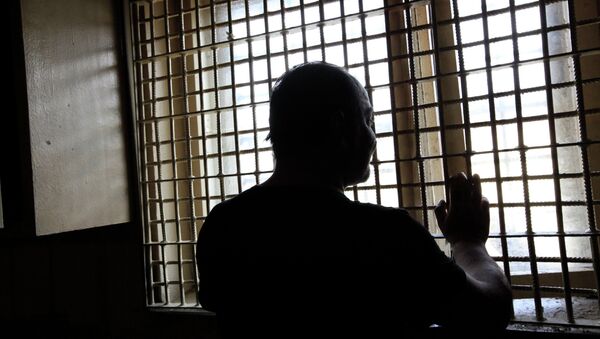MOSCOW, August 11 (RIA Novosti) – Thirty-two American states, where capital punishment is still legal, have put to death over 1,300 people since 1976 for committing murder, aggravated by torture, rape and other factors.
The United States is one of the world’s leading countries for the number of executions. According to an Amnesty International report, the country was sixth in 2013 – after China, Iran, Iraq, Saudi Arabia and North Korea.
The US Supreme Court brought back the death sentence after it was declared unconstitutional from 1972-1976. Since then, some 1,386 people have been executed in the country for murdering almost 2,100 people, The Washington Post reported.
According to the report, southern states carried out the vast majority of executions – together, the authorities of Texas, Oklahoma and Virginia account for more than half of the country’s death penalty toll. On the contrary, the northeastern states of Connecticut, Colorado, New Mexico and Wyoming have enforced one death penalty each.
The study also outlines the age and racial composition of both executed killers and their victims. The first parameter varies from 22 to 77 years, with the majority of the murderers executed in their thirties.
As for the racial structure, the report provides roughly equal number of Caucasian and African-American killers put to death with minor share of Hispanic, Native American and foreign sharing the same fate.
However, Amnesty International’s US division claimed in its “Death Penalty Facts 2012” paper that capital punishment in the country is “racially biased,” arguing that 77 percent of the people who were sentenced to death were executed for murdering Caucasians, “even though African-Americans make up about half of all homicide victims.”
State laws sanction various methods of carrying out a death sentence, including hanging and a firing squad, last used June 2010 in Utah. Still, the vast majority of the executions, that is 1,211 cases, were carried out by lethal injection.
The Death Penalty Information Center explains that prior to 2009 “most states used a 3-drug combination for lethal injections: an anesthetic (usually sodium thiopental, until pentobarbital was introduced at the end of 2010), pancuronium bromide (a paralytic agent also called Pavulon), and potassium chloride (stops the heart and causes death).” Certain states, though, use other mixtures and chemicals, and sometimes, experimental ones.
The center describes 46 cases of botched executions since 1982. In April, Clayton Lockett, sentenced to death for sexually assaulting and murdering a woman, was given a new lethal three-drug mixture for the first time. Seven minutes after the injection, he was still conscious and died of a heart attack after another 36 minutes.
Observing the lethal chemicals, The Associated Press stated “Two of the drugs used carry warnings that they can suppress the respiratory system and the third warns that cardiac trouble can occur at high but non-lethal doses, and lists specific steps to take if a medical patient receives too much of the drug but doesn't die.”
Another case that has received international media coverage was the execution of Joseph R. Wood in Arizona, convicted of murdering two people. The Arizona Republic and 12 News said that after receiving an untested lethal injection, Wood was gasping for air for more than 90 minutes before finally dying.
During his trial, Wood’s attorneys had been trying to get a stay of execution, arguing that the prison’s authorities refused to disclose the origins of the execution drugs to the convict and that the injection “posed a risk of violating the Eighth Amendment’s ban on cruel and unusual punishment,” but the Supreme Court let Arizona proceed, Time magazine reported.

